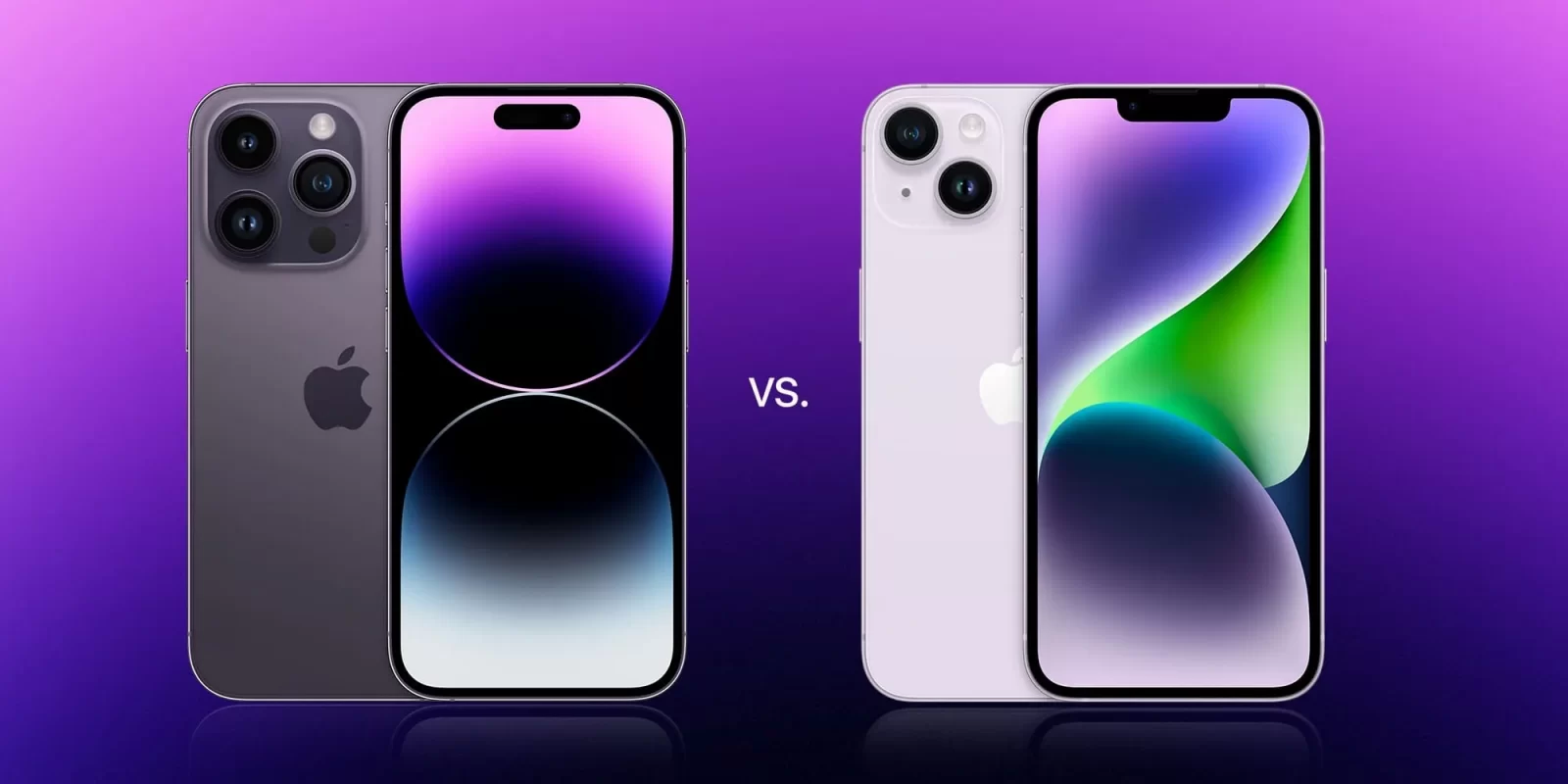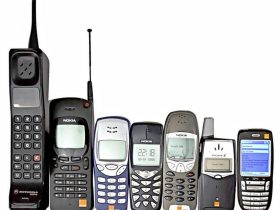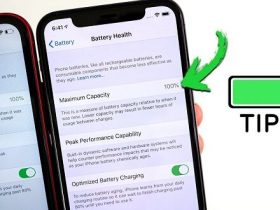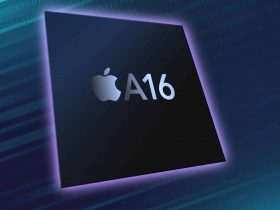The iPhone 14 and 14 Pro are similar in many aspects. The two have similar cameras, flat edges, and Face ID, and they both support iOS 16. While they both offer the same software experience, the iPhone 14 Pro offers a new camera on the front and a larger display. It also has 5G connectivity.
Similarity of iPhone 14 Vs iPhone 14 Pro
The iPhone 14 Pro were released last year and have similar specs, but they differ in several ways. Both have a 6.1-inch screen and are similar in size, but they also have different cameras. The iPhone 14 features an upgraded 12-megapixel TrueDepth camera with autofocus.
The iPhone 14 Pro has a 120Hz adaptive refresh rate and features ProMotion technology, which makes the display smoother and more responsive. This makes for a smoother scrolling experience and smoother animations. People who are not used to viewing high-refresh-rate displays may not notice the difference, but once they do, they will never want to go back to a 60Hz display. The screen on the iPhone 14 Pro is also brighter, with a maximum brightness of 2,000 nits. This is significantly higher than the standard iPhone 14’s maximum brightness of 1,200 nits.
The two iPhones are similar in size and weight. Both have a 6.1-inch Super Retina XDR display. The iPhone 14 is slightly thinner than the iPhone 13 and is the same weight as the iPhone 13. Both feature a wide color gamut and Haptic Touch.
The iPhone 14 Pro has a slightly wider screen and a better camera module than the iPhone 13. The image quality is similar, but the 14 Pro has higher saturation and more contrast. The 14 Pro’s main camera module is 48MP. It also has a larger sensor. The same can be said for the camera’s front and back.
Apple’s Photonic Engine is a new feature that works in all iPhones. It merges the best pixels from several photos to give a more lifelike result. This feature should improve images, especially when taken in low light. The improved light-gathering performance also makes low-light photos less noisy. Both phones also have upgraded front cameras with ProRes and Dolby Vision HDR.
Differences of iPhone 14 Vs iPhone 14 Pro
The iPhone 14 Pro have similar design elements, but there are some notable differences. The iPhone 14 Pro has a larger display, improved camera system, and Face ID. These features are helpful, but they don’t alter the way the device functions on a daily basis.
The iPhone 14 Pro’s display has ProMotion technology, which enables the screen to adjust its refresh rate to as low as 1 Hz. It also features a redesigned lock screen with Dynamic Island, which bridges the gap between lock screen widgets and home screen notifications. In addition, the iPhone 14 Pro offers live access to many controls, including a toggle for the music player and microphone indicators.
The main camera on the iPhone 14 Pro has a 48-megapixel primary sensor. It also uses pixel binning to let in more light. It also has more advanced features such as digital zoom up to 15x, night mode portraits, and macro photography. The iPhone 14 Pro also supports Apple ProRAW, a format used for capturing high-resolution images. Both phones also have identical front-facing cameras, so you can use either one to take selfies.
There are other differences between the iPhone 14 Pro. The iPhone 14 Pro has a more powerful camera than the iPhone 14. The phone’s camera system has a 48-megapixel wide sensor, 65% more than the iPhone 13 Pro’s. It also has a 2x telephoto zoom. If you want to take pictures of landscapes, the Pro model is the better choice.
The iPhone 14 Pro has better battery life and a larger screen, but it costs more than the standard iPhone. If you are looking for the best smartphone for your needs, the iPhone 14 Pro is likely to exceed your expectations.
Storage options
When choosing between the iPhone 14 standard and iPhone 14 pro, you will want to consider how much storage space you will need. Apple offers three storage options on the standard model: 128GB, 256GB, and 512GB. The Pro model also has a larger storage option: 1TB.
256GB is the middle ground in storage options, suitable for casual users and photographers. It also works well without iCloud, allowing you to store high-resolution content. However, if you’re a heavy user and take many pictures and videos, a 512GB model might be the better choice. It also has the advantage of being able to access files without internet connection, and it has enough space to shoot 4K videos. The 512GB model can be very useful for gamers, who often use large apps and games.
Both the iPhone 14 pro and 14 base models offer good camera arrays. However, the base model lacks the upgraded 48MP sensor. It also doesn’t have the Apple ProRAW feature. The base models of the iPhone 14 offer 128GB and 256GB of storage. The iPhone 14 Pro Max models have 512GB and 1TB of storage. The Pro models also support fast charging at 20W. Both the Pro and 14 Max also feature WiFi 6 and Bluetooth 5.3.
The iPhone 14 Pro offer a larger display and more storage options, but they are both more expensive. The base model of the iPhone 14 costs $799, while the iPhone 14 Pro starts at $1199 and goes up to $1399 if you choose 256 or 512 GB. The 1TB model is rumored to cost $1499 or more.
5G connectivity
The iPhone 14 Pro features significantly faster 5G connectivity than its predecessor. This is largely due to Qualcomm’s new Snapdragon X65 5G modem. The new modem supports download speeds of up to 10Gbps, and it also uses less power than its predecessor. The non-Pro version of the iPhone 14 also features this new 5G modem. According to SpeedSmart benchmark tests, the iPhone 14 Pro achieves download speeds of up to 38% faster than its predecessor.
The new iPhone features Qualcomm’s Snapdragon X65 modem, which supports both 5G mobile data and satellite communications. This chip is also available as a wireless card for 5G capable laptops. Its additional features include the ability to send emergency messages using Globalstar satellites over the n53 frequency band.
The new iPhone 14 also features Apple’s new Super Retina XDR display, which is capable of switching between one-hundred Hz. Apple has also improved the phone’s camera with dual-sensors that let you take stunning pictures in low-light and bright light. Lastly, the phone is compatible with T-Mobile’s 5G network, which offers ultra-fast speeds in more places. 5G support is available on all T-Mobile data plans. Both devices are available in a wide range of colors and storage sizes. To get the best iPhone for you and your needs, check out our iPhone comparison chart.
iPhone 14 Pro price starts at $999 for the 6.1-inch model and $1,099 for the 6.7-inch iPhone 14 Pro Max. You can also get a 1TB model for $1,499 or $1,599 (depending on your size). Both models come in a range of color options, including Deep Purple, Gold, Silver, and Space Black.
Video capabilities
Apple’s iPhone 14 Pro Max and iPhone 14 support ProRes video recording in the Camera app. However, there’s no support for 4K video recording on the 128GB models. This is because 4K videos are huge, with file sizes up to six times as large as those recorded in 1080p.
The iPhone 14 Pro boasts a 48-MP camera, the highest-resolution camera on an iPhone. Its resolution is comparable to that of flagship Android phones. This camera is useful in a number of ways, including in low-light settings. The camera’s four layers of pixels group together to create quad-pixels, which gather up to 20 percent more light than the previous models. Moreover, the camera also offers two telephoto modes, which use the middle 12 MP of the camera. Lastly, the camera is capable of recording 4K video.
Apple’s latest technology also enhances video quality. Its Action mode improves video stabilization, cropping in the video so that it is level and centered. Its video stabilization feature works across the rear cameras to prevent any horizon shifts. As a result, the iPhone 14 Pro Max is capable of shooting 4K videos at 24 frames per second.
In terms of camera technology, the iPhone 14 Pro has a 48MP main sensor and is also capable of shooting video in raw format. However, in order to use this new feature, you’ll have to dig through the settings and select the appropriate option. Luckily, it doesn’t seem to affect the quality of the display, so shooting in raw mode is probably only for pro photographers.
The cameras on the iPhone 14 are also much improved. The iPhone 14 has a faster f/1.5 aperture, which improves low-light performance. Both cameras also support autofocus, which should provide more clear selfies. The iPhone 14 also features a new sensor that uses artificial intelligence.









Hey There. I discovered your weblog the use of msn. This is
a really well written article. I will make sure
to bookmark it and return to learn extra of your useful information. Thanks for the post.
I’ll definitely return.